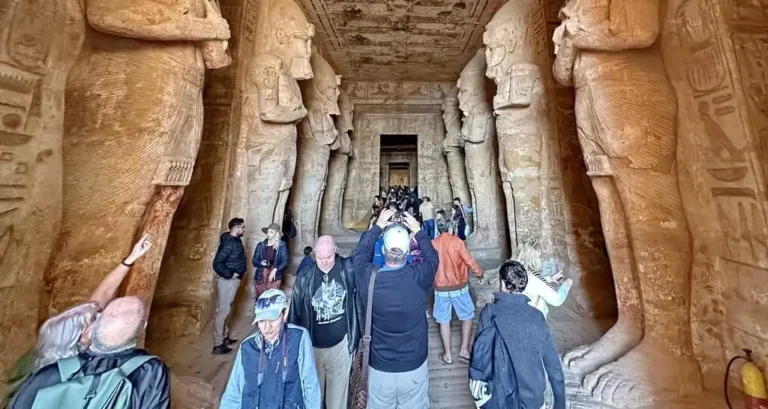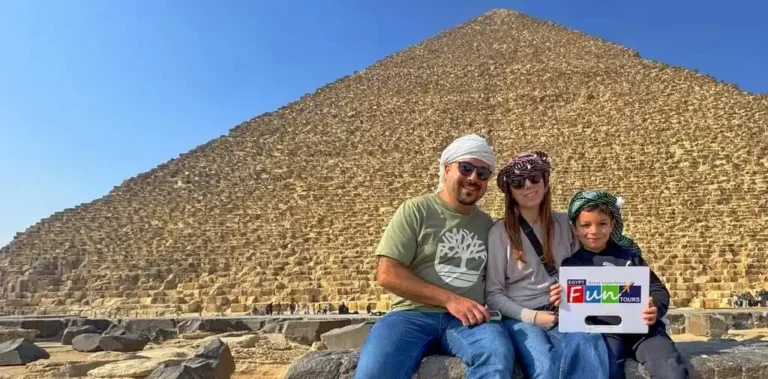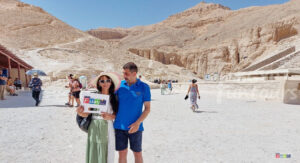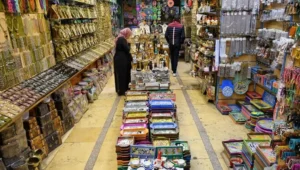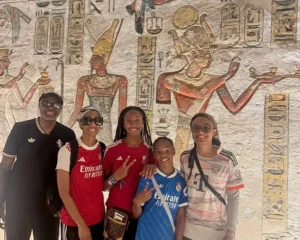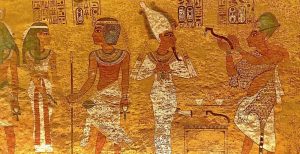The Valley of the Queens: A Hidden Gem of Ancient Egypt
The Valley of the Queens, located on the western bank of the Nile near Luxor, Egypt, holds immense historical significance and breathtaking beauty. This ancient burial ground, often overshadowed by the more famous Valley of the Kings, served as the final resting place for the queens and royal children of the New Kingdom, specifically during the 18th, 19th, and 20th dynasties. It stands not only as a testament to rich ancient Egyptian history but also as a remarkable site for archaeology and art.
Historical Significance
Ancient Egyptians knew the Valley of the Queens as “Ta-Set Neferu,” meaning “the place of beauty.” It was established as a burial site for pharaohs’ wives and their offspring. Queen Nefertari, the beloved wife of Ramses II (13th century BCE), is the most notable queen buried here. Her tomb, QV66, is famous for its stunning frescoes and intricate wall paintings. These artworks reflect her beauty and the religious beliefs of her time.
Unlike the Valley of the Kings, which entombed pharaohs, the Valley of the Queens focuses on royal women and their contributions to Egyptian society. The site contains over 90 tombs. Many remain relatively untouched, offering invaluable insights into the lives, beliefs, and artistic expressions of ancient Egyptians.
Architectural Marvels and Tombs
Elaborate decorations and intricate designs characterize the tombs in the Valley of the Queens. Nefertari’s tomb, the most famous, features vibrant colors and detailed scenes. These depict her journey into the afterlife. Walls are adorned with images of Nefertari. Goddess Isis and Osiris welcome her into the afterlife. This underscores the importance of the afterlife in Egyptian culture.
Other notable tombs include those of Queen Tiy, wife of Amenhotep III, and Aset, a lesser-known queen. Each tomb exhibits a unique artistic style. Depictions of gods, goddesses, and daily life scenes showcase ancient artisans’ skills.
Archaeological Discoveries
The Valley of the Queens has been a focal point for archaeological research. Many discoveries shed light on the lives of the queens and their families. Excavations have revealed artifacts, jewelry, and pottery. These provide insight into the burial practices and daily lives of these royal women. Recent restorations and conservation efforts aim to preserve the stunning artwork and architecture. This ensures future generations can appreciate this remarkable site.
Cultural Impact and Modern Significance
Today, the Valley of the Queens is a UNESCO World Heritage Site. It is a popular destination for both tourists and scholars. It offers a more serene alternative to the bustling Valley of the Kings. Visitors can immerse themselves in ancient Egypt’s rich history without the crowds.
The valley also reminds us of women’s often-overlooked contributions in ancient Egyptian society. By celebrating these queens’ lives, the site challenges traditional narratives. It highlights the importance of female figures in a patriarchal culture.
The Valley of the Queens is truly a hidden gem in Egypt’s heart. It offers a unique glimpse into the world of royal women and their afterlives. With its stunning tombs, rich history, and breathtaking artistry, it stands as a testament to ancient Egyptian civilization’s enduring legacy. Whether you are an avid historian, an art lover, or simply a curious traveler, a visit to the Valley of the Queens promises an unforgettable journey into the past, illuminating the lives and stories of the remarkable queens who shaped Egypt’s history.
The Most Prominent Tombs in the Valley of the Queens
Tomb of Queen Nefertari (Tomb 66)
The tomb of Queen Nefertari, located in the Valley of the Queens on Luxor’s west bank, is one of Egypt’s most beautiful tombs. This tomb offers numerous “wow” aspects. The level of detail is incredible. The colors are more brilliant than any of Egypt’s other tombs, temples, or pyramids. Include Queen Nefertari’s tomb on your list if you want to see what tombs were like 3,000 years ago.

Tomb of Khaemwese (tomb 44)
The tomb of Khaemwese (tomb 44) is among the valley’s tombs. Scenes in Khaemwese’s tomb depict him and his father being brought to the guards of the gates of the afterlife. He is clothed in a robe, wearing a necklace, and sporting the sidelocks of youth as he makes an offering in the scenario.

Queen Titi’s Tomb (Tomb 52):
She most likely was a queen of the 20th Dynasty. Moreover, she appears alongside the gods Thoth, Atum, Isis, and Nephthys. Her sidelocks, a style common among Egyptian youth of that era, further distinguish her. In the next chamber, the queen presents gifts to Hathor the cow. Finally, the last chamber features the gods Neith, Osiris, Selqit, Nephthys, and Thoth.

Amenhikhopeshef’s tomb (Tomb 55):
Amenhikhopeshef was a son of Ramesses III, and scenes depict him with his father and gods such as Thoth, Ptah, and others. When he died, he was probably around nine years old. His father, Ramesses III, is shown presenting him to different gods, including Anubis, the Jackal-headed deity of the dead. In the grave, a preterm infant was also discovered. This was the property of this mother, who had an abortion after learning of Amenhikhopeshef’s death.

Tomb of Tanedjemet (QV33)
Karl Richard Lepsius described the QV33 Tomb in the Valley of the Queens, designating it as tomb number 14. Looters likely plundered the tomb around the end of the 20th dynasty, after which people reused it in the 26th dynasty. It contained a considerable amount of glasswork and other period-appropriate objects. Later, during the Roman period, people placed several mummies in the tomb. These graves date from the second and third centuries CE.


